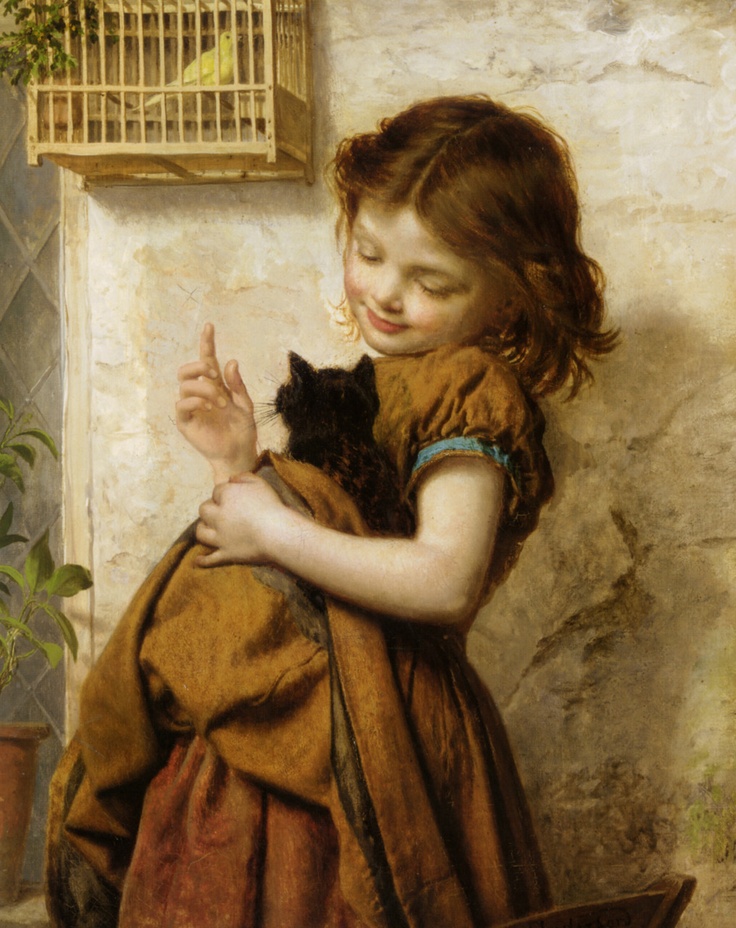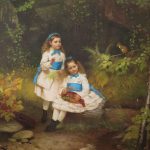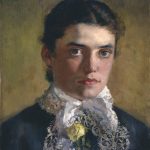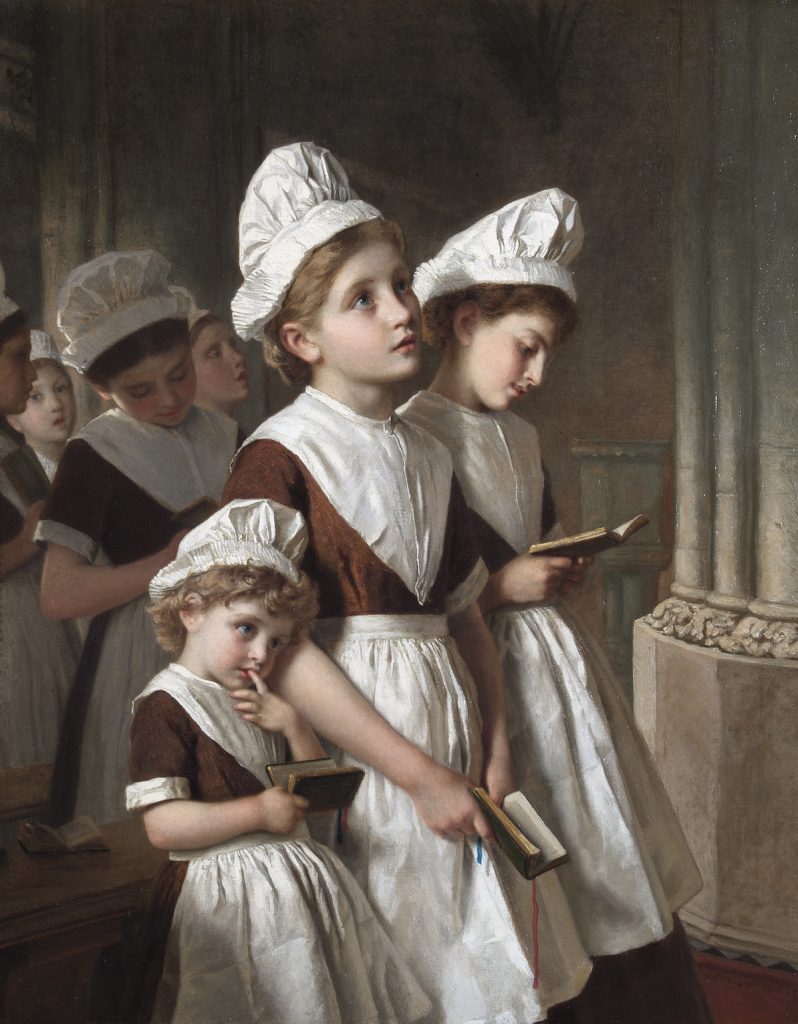
Sophie Gengembre Anderson (1823 – 1903) was a French-born British artist known for her significant contributions to the genre of Victorian-era genre and portrait painting. She was one of the few successful female artists of her time and gained recognition for her sentimental and highly detailed works. Here are some key points about Sophie Gengembre Anderson:
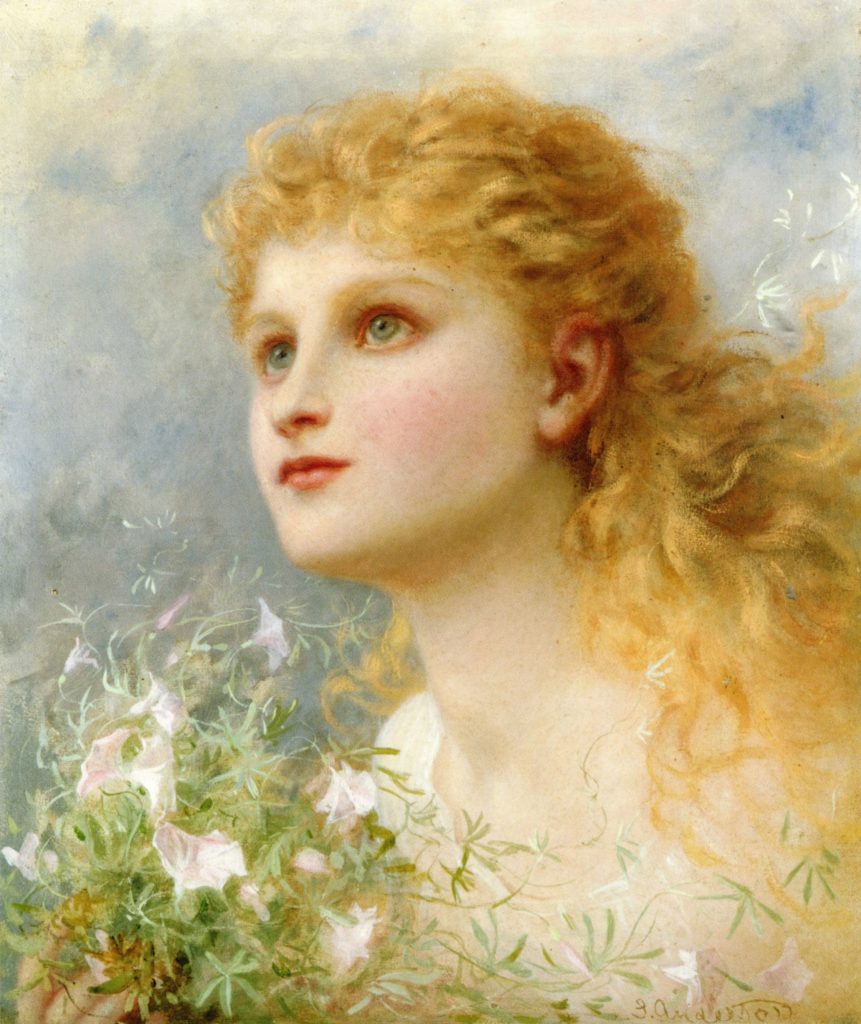
- Early Life and Background: Sophie Gengembre Anderson was born in Paris, France, to a French father and an English mother. Her family moved to the United States in 1848, and she eventually settled in Pennsylvania with her husband, British artist Walter Anderson.
- Artistic Training: Sophie Anderson received her artistic training in the United States and later in Paris, where she studied under various notable artists. She developed her skills in portrait and genre painting, often depicting children and women in domestic settings.
- Move to England: In the early 1850s, Sophie and her husband Walter moved to England. It was during their time in England that she gained recognition for her work and became associated with the Pre-Raphaelite Brotherhood, although she was not an official member of the group.
- Genre and Sentimental Art: Anderson’s paintings often featured scenes of children and women in idyllic, pastoral settings. She was known for her sentimental and emotionally charged portrayals, which resonated with Victorian audiences. Her works often conveyed themes of innocence, motherhood, and domesticity.
- Popular Works: One of Sophie Gengembre Anderson’s most famous paintings is “No Walk Today” (1857), which features a young girl sitting forlornly in a chair with her pet dog, unable to go for a walk due to the rain. This painting exemplifies her sentimental style and mastery of detail.
- Success and Recognition: Anderson’s work gained popularity and critical acclaim in England and the United States, and she exhibited her paintings at prestigious venues such as the Royal Academy of Arts in London.
- Influence and Legacy: Sophie Gengembre Anderson’s contributions to Victorian art, particularly her depictions of childhood and motherhood, had a lasting impact. Her work influenced other artists and contributed to the popularity of the sentimental genre during the 19th century.
- Later Life: Anderson continued to paint and exhibit her work throughout her life. She and her husband Walter traveled extensively and painted in various locations, including the Isle of Capri. Anderson passed away in Falmouth, Cornwall, in 1903.
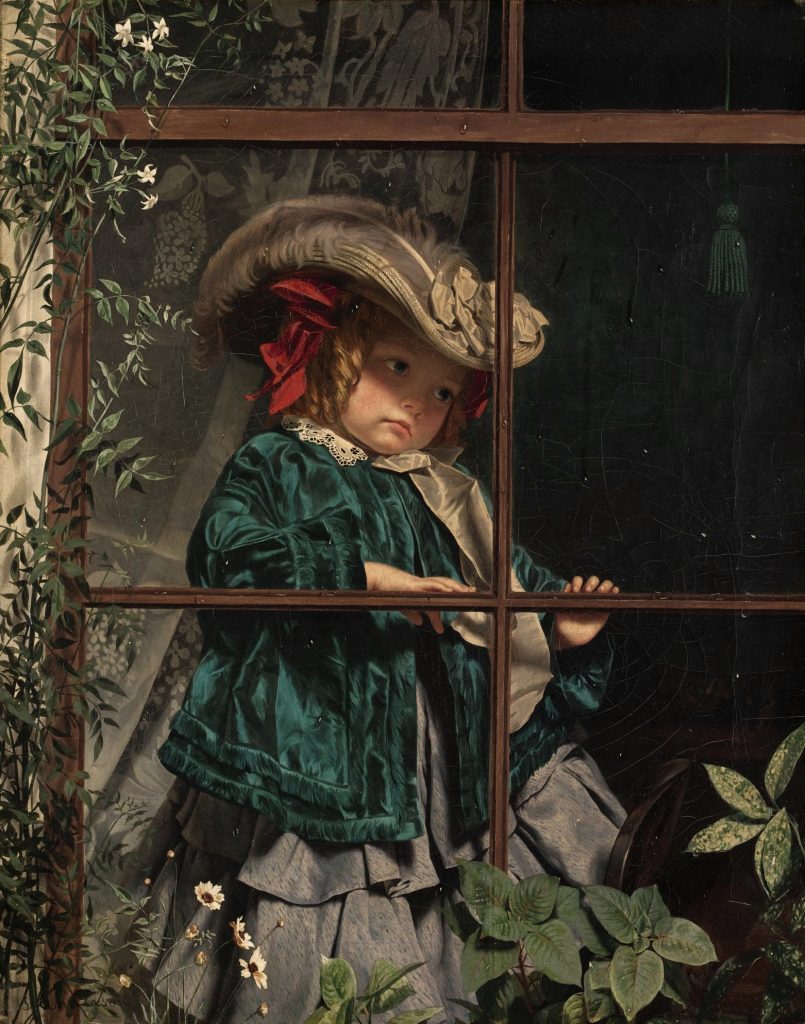
Sophie Gengembre Anderson’s art remains significant for its portrayal of sentimental themes and her ability to capture the emotions and innocence of her subjects. Her work continues to be appreciated for its technical skill and its place within the broader context of Victorian art and culture.
